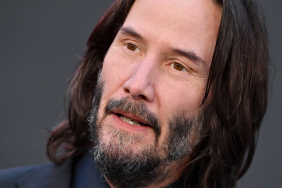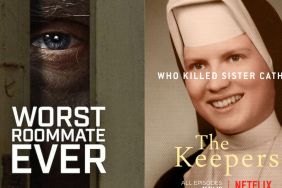When talking to Cary Granat, CEO and Co-founder of Walden Media, you quickly realize how enthusiastic he is about the advent of 3D technology that allowed his company to make Journey to the Center of the Earth 3D, maybe because they have a lot riding on audiences embracing the 3D experience. It’s taken a couple weeks for us to connect, but we finally had a chance to talk to Mr. Granat about his company’s forays into 3D in order to get another angle on the phenomenon and where we might expect it to go in the future.
ComingSoon.net: I’m not sure if you read my comments on “Journey 3D” from ShoWest, but I thought it was a fun summer movie and I liked it enough that I’d see it again in a second.
Cary Granat: Well, that’s the key. These films are always hard to do and they’re even harder to make when you’re not just unloading boatloads of money into it, but you’re being strategic and trying to build a new business model at the same time, and I think here, this took our company seven years of research and development to get to this place.
CS: Just for “Journey”?
Granat: To get to make “Journey” like we did, it started out for us with two more experimental films that we made with Jim Cameron called “Aliens of the Deep” and “Ghosts of the Abyss” before that, and those were films that we had released both in IMAX and also in early 35 digital screens. We were the first mover in the whole digital projection for 3D, this was in 2002-3, and Cameron, in making “Ghosts of the Abyss” with us, developed this camera system called the Fusion system, which is a lightweight digital camera, which is ultimately what we used for the making of “Journey.” The early days of “Ghosts” and “Aliens of the Deep” became kind of the beta test but also the research ground for ultimately the work he’s doing now on “Avatar” and the stuff we’ve then picked up and done. Frankly, it’s the same camera and post-production technology that Disney then used on “Hannah Montana.” If this were a comic book, that would be called the “origin story” period of time.
CS: Was the decision to make “Journey” a 3D film already in place when Eric Brevig came on board to direct it? Was that an idea that was developed when you first got the rights to the Jules Verne novel?
Granat: We initially developed the project at the same time we’re making “Ghosts of the Abyss” and “Aliens of the Deep” as a 2D-type film. What we started to see as we were making those movies was the amazing ability that 3D could give you, and that’s when we decided to switch, in 2002 and 2003, we changed the development process “Journey” from 2D to 3D, concurrent with what we were doing in the 3D space, and then we hired Eric, because we were looking for a filmmaker who we didn’t have to educate on 3D, and Eric came already having immersed himself as one of Jim Cameron’s one-hand guys on visual FX, and really understood the space, having worked at ILM so many years with Lucas and everybody. He was someone who had a great vision, more importantly, for how to make a fun, entertaining rollercoaster ride of a film.
CS: Why did you think it would be the best movie to try out the 3D technology as opposed to some of the other action-fantasies Walden has produced?
Granat: Mainly because most of the environments were either built or created environments versus trying this out on a “Narnia” film or something like that where you have a tremendous amount of exteriors, so this process allowed us to have more control over the world we were shooting in, so for example, the mine car sequence, the great freefall sequence. These are sequences that we had more control over visually to do things with.
CS: I understand that making “Journey” was very experimental in that it was the guinea pig for making a full dramatic feature using the technology since no one else had done it before, so was it easier or harder to do it than doing a documentary where you’re dealing with the elements?
Granat: A thousand percent [easier]. We all get into the entertainment business and into making films for different reasons. We all want to make and feel like we’ve made a really important story that’s changed things, but the other reason we get into the entertainment business is to say, “You know what? I want to do something so technologically different, so exciting, that I’m in a brand-new frontier.” And that’s what the making of this film was like for us. It was so exhilarating, because EVERYTHING we were doing was being done for the first time. Shooting these action sequences, shooting the actors, where they stood staging-wise, how we were watching the action that was being shot on monitors on the set for the first time was just incredible. We could not build the technology and create ideas for technology fast enough to support the making of this film. For example, in the making of the movie, it was literally like the first day of shooting, one of our research people came running in with a giant plasma screen and said, “We did it! We’ve modified the screen so that we can shoot the action and watch it simultaneously in 3D on the set.” Everybody was like, “C’mon, no you didn’t!” And we did. We were able to watch it “glass-less” on the set, so that we could shoot and watch the dailies.

CS: Brendan Fraser has been a really big proponent of the movie’s 3D technology, really talking it up at ShoWest.
Granat: I know, he’s great. Brendan has been unique in that not only has he been amazing to work with as the star of the film. Brendan has been a critical and key producer of the film. He’s been an amazing creative force helping to drive the making of this movie.
CS: I was really impressed that such an effects-driven movie was ready to be seen at ShoWest months and months before its release date. Was that just something you prepared in advance to have it ready for the convention?
Granat: It was always the hope and intention that we would be ready by then, and we were very fortunate that the team worked so hard in overtime to get it there.
CS: As far as the progression of 3D over the past few years, it was very much a buzzword at ShoWest, where everyone wanted to know what they could use it for. At one point, 3D was seen as a gimmick but it’s not that anymore, it’s more like an experience I guess. Can you talk about how people view 3D differently now?
Granat: First off, one of the reasons I was so excited to talk to you today was to convey to you that the more we can get key influencers online as well as media in general to talk about how excited they are about 3D, the more the exhibitors will start to realize we’ve got to do this a lot faster. It has become a buzzword, but it’s been a buzzword for a long time, and I think we need to take it from being a buzzword to being a reality as quickly as possible and get everybody to commit to this process and commit to moving it along.
CS: At least until “Hannah Montana” did so well, I think 3D has caused a lot of concern and questions about what more is involved with running digital 3D movies, because it’s so new, and there’s still a limitation of screens, so will you have a 2D version of the movie out there for those who don’t have a 3D-capable screen nearby?
Granat: Great question and it’s something we’re debating right now. My dream had always been to open the film just in 3D. We had been given so many assurances by everybody, “Don’t worry. There’ll be 2,000 3D screens by July.” This was two years ago, so now we’re in a situation where our hope is that we can get the screens up to 1,100 or a thousand theaters. We’re in a pursuit of the exhibitors to say, “Please, please, please, get as many up as you can.” If anybody wants to see the value of 3D, they saw it with “Miley Cyrus” but this will be the first time a narrative feature would be coming out purely in 3D, and I’d want to believe that all of those theaters would be jumping at this.
CS: So in that case, having the film ready for ShoWest must have been a really good thing.
Granat: Absolutely, and the exhibitors had an amazing reaction to the film, they loved it, which is great.
CS: Were you still at Dimension films when Robert Rodriguez decided to make “Spy Kids 3D”?
Granat: No, I did the first “Spy Kids” and we always in the early days of Dimension wanted to do 3D but Robert and Bob Weinstein deserve the credit for diving back into the fun of 3D, but that’s a very different 3D, that’s anaglyphic 3D, but still it was fun, and I think people appreciated what Robert was trying to do. I think Robert is a genius when it comes to breaking ground and trying new things.
CS: What are Walden Media’s plans for future 3D films?
Granat: We will continue to make 3D films. We have one major franchise we’re developing in 3D right now, but I can’t announce it because we haven’t discussed it yet, but we are taking 3D very seriously right now.
CS: ILM has been working on something that will make non-3D movies 3D, and when I wondered if you see a time when all theaters will be 3D or people will feel they need to see all movies in 3D because it’s such a more enriching experience?
Granat: I don’t think you only will see things in 3D, because there’s always going to be great films that are made that frankly don’t need to be 3D. I’ll give you an example. There’s no way that a great film like “Juno”that doesn’t need to be in 3D, and I don’t think “Juno” in 3D is going to make that experience any less valuable. “Juno” is just a great film. You don’t need that. I’m not sure that you want to feel immersed
imagine watching the movie “The Departed”I’m not sure watching that film in 3D, that might even work against it. I’m not sure. There are certain films on a narrative basis that you’re just going to enjoy. Ironically, there are certain independent films that were brilliantly made that I think might have a life in 3D, like “Diving Bell and the Butterfly” which were so visual and visually stunning that they might even have a second life in 3D.

CS: There’s also the danger of going too far where people are not using the 3D creatively.
Granat: Of course. That’s the fear in general, is the gimmick.
CS: The “Narnia” films are such a big franchise which has spawned so many other fantasy films. Do you ever see doing one of those books as a 3D movie since Disney is also so behind making 3D films now?
Granat: I think everybody is starting to getting into it. I don’t know yet. It’s a tough thing to answer right now.
CS: Getting away from the 3D for a second, I’m really intrigued by the books Walden picks up to adapt into films. What things do you look for in the books you decide to make into films?
Granat: At our company, the focus has been trying to
and some of the films we’ve done have succeeded in what I’m about to say and some of them, we’re still taking lessons for what we can be doing better as a company in general to be more connected to the audience. I think our whole main goal has been a sense of way proactive kid and parent protagonists in all of our films, people taking charge of a situation and taking over a situation, where they basically have to step in and actually assume more responsibility that had previously been given to them. Again, proactive kids or proactive family entertainment, proactive entertainment for all audiences, that’s kind of the core theme of Walden and what it’s been. So when you look at some of our more successful films like “Bridge to Terabithia” or “Holes” or “Narnia” especially, and now “Journey” and some of the others coming up, the common theme of people being thrust into a situation now of their creation, but having to, in essence, step up and take charge of it.
CS: I know that “Mr. Magorium” was one of the first original screenplays Walden produced and you mentioned “Juno” before. Do you see Walden doing more original films or even smaller character-driven family movies in the future?
Granat: We are doing a lot of original stuff as well, absolutely. We’re doing a huge original movie called “Tortoise and the Hippo” which Andrew Adamson, our brilliant collaborator on the “Narnia” franchise, is creatively producing a big franchise for us with Fox together, that John Dykstra, the amazing visual FX innovator, it’s his first directing effort, and we’re going to shoot the movie entirely photo-real live action, but it’s the story of a baby hippopotamus that’s picked up by the tsunami that hit the Indian Ocean and carried literally from one shore to another country, and lands next to this hundred-year old tortoise and all his friends and it becomes this big adventure as all of these real animals help the hippopotamus get home.
CS: It sounds like one of those great Disney nature films we used to see.
Granat: Except that it’s a big adventure movie with a tremendous amount of comedy.
Journey to the Center of the Earth 3D opens in 3D theaters (and hopefully there’ll be more by then) on July 11, 2008.









